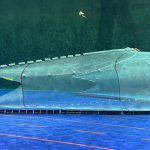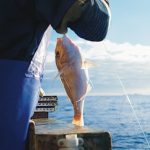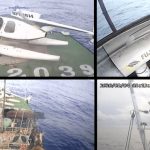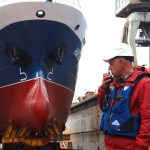The recent approval of the Foveaux Strait Dredge Oyster Fisheries Plan by Minister of Fisheries Hon Phil Heatley marks an important milestone for management of New Zealand’s fisheries.
Since late 2005, the Ministry of Fisheries has worked with tangata whenua and fisheries stakeholders to prepare objectives-based fisheries plans.
The concept is simple: describe current management of the fishery; decide how to get best value from the fishery within environmental limits; and design management measures and services – such as research and compliance – to achieve that value.
While the reality is a little more complicated and development of fisheries plans has required a lot of effort by all concerned, good progress has been made.
In addition to the Foveaux Strait Oyster Plan, fisheries plans covering hoki, orange roughy, northwest inshore finfish, Challenger inshore finfish, and southern shellfish are nearing completion. Industry organisations are also developing fisheries plans: the SPO7 (Rig) plan which covers Rig in the North and West of the South island was approved in 2006, and plans for Challenger scallops and South-east inshore finfish are under development.
National Manager Fisheries Operations for the Ministry, Jonathan Peacey, commends the participants in the fisheries planning groups.
“A lot of work has gone into fisheries plans and those who have contributed are to be congratulated for their efforts. These plans will be an excellent springboard to add value to fisheries and for us all to be more accountable for how our fisheries are managed.”
New way forward
Jonathan says the Ministry has learned a lot from its experience with the first group of plans and through feedback from other participants in the fisheries planning process.
“We will use that experience to refine the way we prepare future fisheries plans to improve prioritisation of resources and provide a clearer basis for monitoring the performance of each fishery.”
He says that future fisheries plans will be more standardised, including common high-level objectives. There will be more focus on national plans for each major group of fisheries, with specific parts of plans being prepared for particular geographical areas or individual stocks where significant value can be added. The new approach will build on the fisheries plans that have already been developed.
The process for working with tangata whenua and stakeholders will also be streamlined. There was a lot of feedback about the heavy workload for all working group participants. So, rather than preparing the plans through an extensive series of working group meetings, the Ministry will do more of the preparation in-house and seek feedback from tangata whenua and stakeholders at key stages in the process.
“The Ministry wants to tighten the approach to fisheries plans to ensure a simpler and less open-ended process. That means less time consulting and more time developing plans.”
“We need input from tangata whenua and stakeholders, but we have learned that we cannot expect full agreement on all objectives and interventions in proposed fisheries plans. By acknowledging this and moving forward, we can be more efficient and achieve results sooner.”








